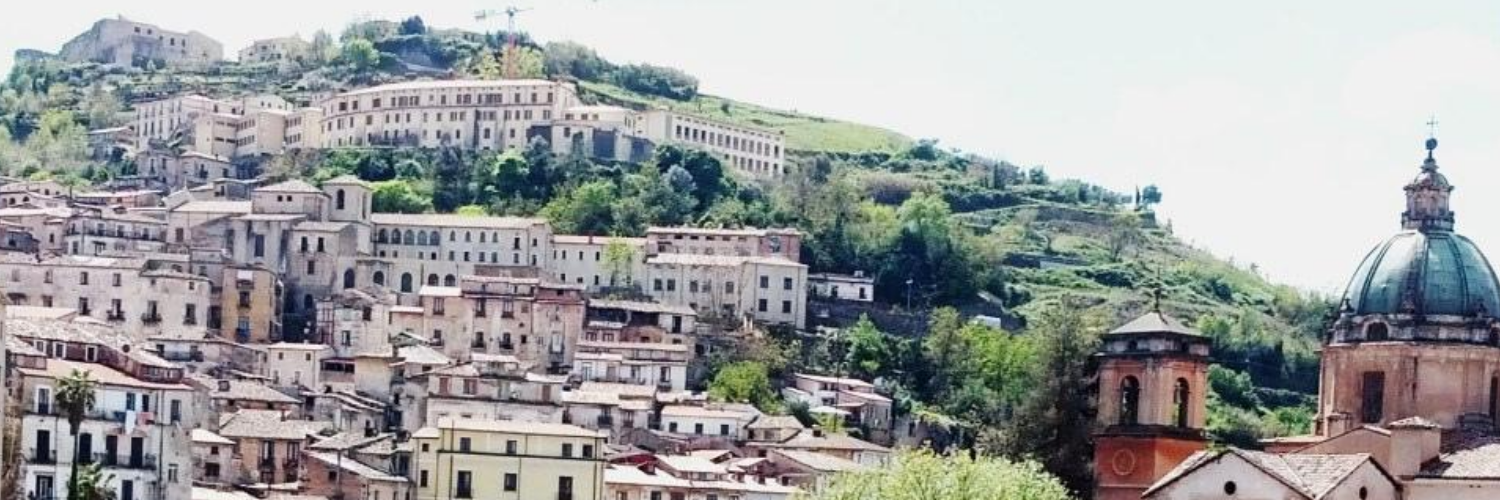Il Duomo in Cosenza
As you walk up the narrow and picturesque Corso Telesio in the centro storico of the old city of Cosenza, you will discover il Duomo in Cosenza. It is a magnificent sight and rich with history.
The Duomo is believed to have been built in the 7th century. However, it was rebuilt in the Gothic-Provencal style following the devastating earthquake that shook Cosenza in 1184. The new church was consecrated in 1222 in the presence of Emperor Frederick II of Swabia when he gave the city of Cosenza a reliquary containing a fragment of the Holy Cross.
In the early part of the 18th century, the Duomo received a facelift. At that time, the church was covered with a Baroque superstructure, which damaged the integrity of the original structure and resulted in many works of art being damaged. Shortly after that, the interior of the Duomo was radically altered with new flooring, pillars, and even walls – also in the Baroque style. It wasn’t until 1831, that the facade of the Duomo was renovated back to the Gothic style. After some time, the original arches and structure of the Duomo were brought back to life.

View overlooking Piazza Duomo from front entrance of Duomo.
Photo Credit: mizoroki
As you make your way from the Piazza up the front stairs and in the Duomo, you are instantly drawn to large rectangular pillars, high ceilings, and exposed wood beam ceiling. The pillars divide up three naves which house the many beautiful frescoes, paintings, and sculptures.
In one of the chapels within the Duomo dedicated to the Madonna Del Pilerio (the patron saint of the city of Cosenza), you will find a painting of the Madonna with the baby Jesus. If you look closely at the painting, you will notice that the Madonna has a spot on her cheek. It is believed that the Madonna freed the city of Cosenza from the plague in 1576 by taking on the disease herself (which appeared as the stain on her cheek).
In the left transept is a monumental tomb for Isabella of Aragon (married to the King of France, Phillip III). Isabella of Aragon was six months pregnant when she and her husband stopped over in Cosenza. Tragically, on their return back to France; she fell off her horse. As a result, she gave birth to a premature stillborn son. The injuries from her fall and the childbirth led to her passing on January 28, 1271, in Cosenza.
You will also find near the side door of the Duomo, located in the right aisle, an ancient Sarcophagus from the Roman imperial era. In it are the remains of Henry VII of Germany, the son of Frederick II of Swabia. He was buried with honours in the cathedral after his death in 1242.
If you happen to find yourself wandering the streets of old Cosenza, be sure to take a few moments to enjoy the beauty of Il Duomo in Cosenza. The amount of history in this building is remarkable and inspiring and worth the visit.
Are you following me on social media? You can keep up with my daily life and musings over on the Calabrisella Mia Facebook Page and Instagram!
Comments are closed.



Angelina Milsaps
November 13, 2015 at 7:09 pmHello I have 2 Consenza paintings that I’d like to learn more about. A beautiful Spanish dancer and the second painting is her male dance partner. Where can I find information on his painting. They are very large, about 20x something and framed in beautiful wooden frames.
LuLu
November 26, 2015 at 3:42 amAre these paintings from the city of Cosenza? or a person named Cosenza? I’m not familiar with any paintings involving Spanish dancers.
Katie
June 3, 2009 at 7:57 amThis church sounds AMAZING! You must take me to it! Great post cara!